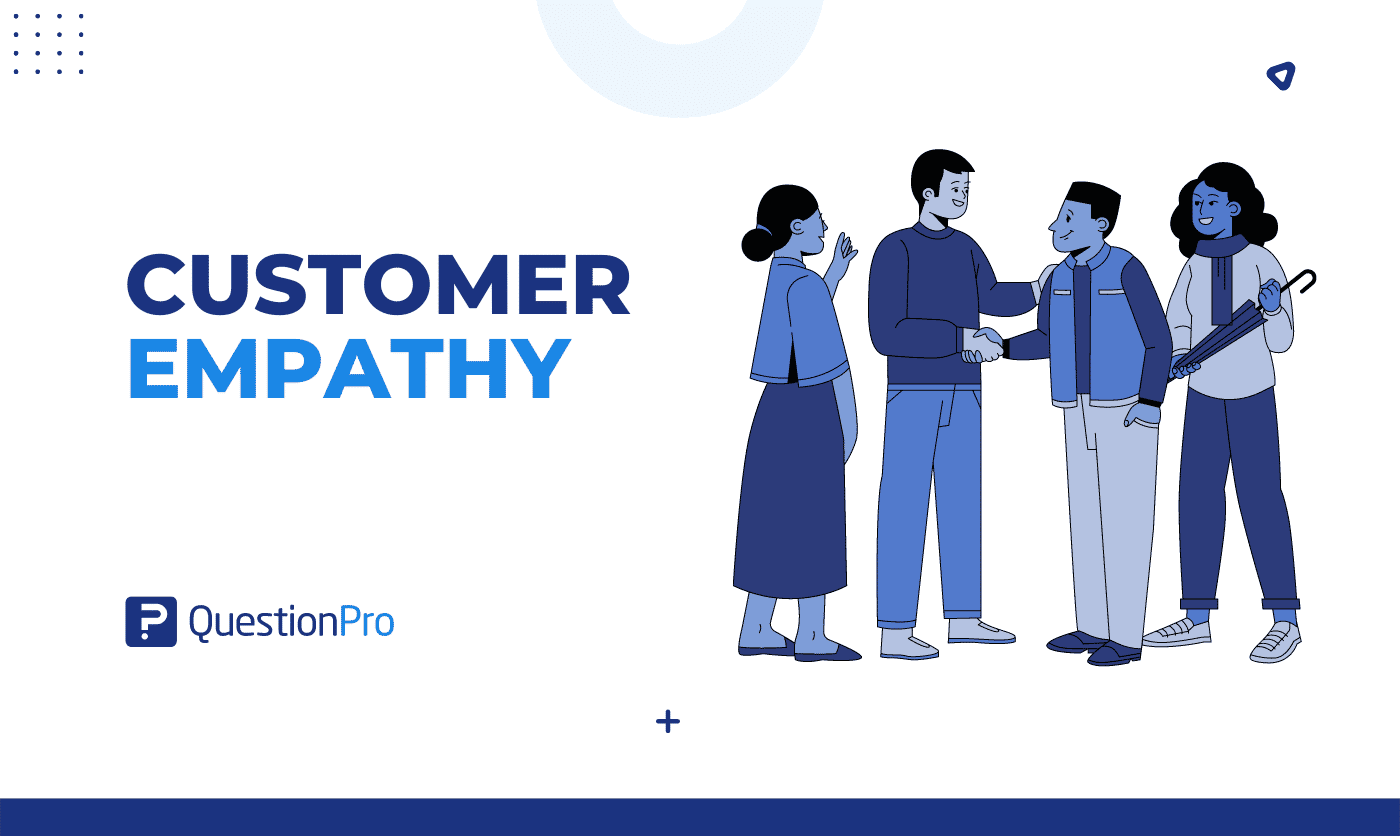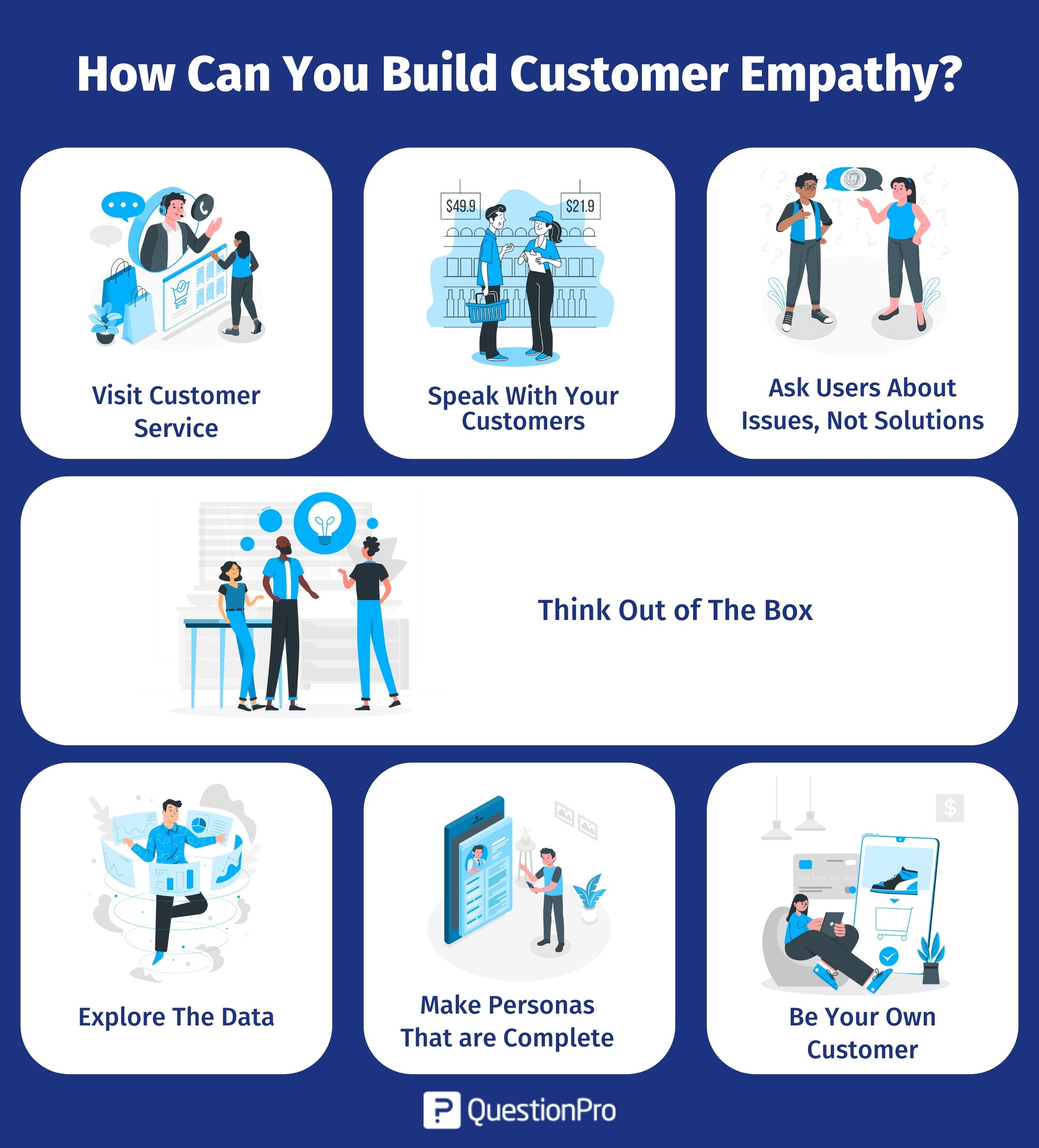
To provide excellent customer service, you must be able to put yourself in the customers’ shoes and comprehend their problems. It is your ability as a company to understand what a customer goes through when using your goods or services. Understanding things from the customer’s perspective is known as customer empathy.
It is essential to a company-focused culture. Without empathy, employees will focus on their problems instead of their customers. They build too complicated products based on what they want to buy rather than what customers need. And they don’t understand the emotional context of your customers.
This blog will discuss customer empathy, why it is important for your organization, and how you can build it. Continue reading to learn more.
What is customer empathy?
Empathy is understanding and sharing another’s feelings. It means putting yourself in another person’s shoes and looking at a problem from their point of view.
Customer empathy is a vital business tool. If you can hook a buyer by making a valuable product for them in their daily lives, you’ve got a recipe for success.
Empathy contributes to developing trust and an emotional bond between a customer and the business, regardless of whether the customer had a positive, negative, or indifferent experience.
For example, it can assist a support representative in handling an angry client.
However, an empathy map is crucial in all occupations, not only those requiring dealing with angry or upset customers. Rather, all positions inside a business need to practice customer empathy.
To be customer-centric, a firm must encourage everyone, from product managers to content marketers, to approach everything they do from the customer’s perspective. Instilling a sense of empathy for the customer throughout a company can result in better products, a better customer experience, and higher levels of client happiness.
We learned what customer empathy is. We will review its importance and how you can build it in your organization.
Importance of customer empathy
There are a lot of reasons why both new and old businesses need to care about their customers:
- It allows you to give excellent customer service and customer care. Customer empathy helps you see things from the customer’s point of view, which lets you give them the best possible service.
- It makes the customer feel like they know the brand better. A loyal customer is likelier to stick with your brand if they feel you understand them and meet their needs.
- Customer empathy training could help you sell more. If you know what your customers want and what they need, you can sell them more products and services that they will want to buy.
- It can help you cut down on turnover. Customers are less likely to leave if they feel their needs are being met and heard.
How can you build customer empathy?
Customer empathy doesn’t just happen, of course. To get to know your customers, you must put in the time and effort to gather relevant information and insights before using them. Here are some great ways to build customer empathy for your organization:

Visit customer service
Customers talk to your customer service department every day. Almost every complaint and question that a customer has is brought to a customer service agent. Spending time with them in the trenches can give you a close-up look at what customers are going through.
As a product manager, you might want to set aside time each week to handle a few support tickets. It will give you more information about what customers are having trouble with. You can always ask your coworkers for customer feedback, but there’s nothing like hearing it straight from the source.
By cutting out the middlemen, you can “feel the pain” of those having trouble, giving you a better idea of what customers often run into trouble with. Even if you aren’t actively involved, getting summaries and statistics from a customer service rep is a great way to bring problem areas to the attention of the whole organization.
It’s important to note that this method is so good at building customer service empathy for customers that some companies even require all employees to spend some time answering support tickets. So, if you want everyone in your organization to care more about customers, you could have customer service agents work on some support tickets from time to time.
Speak with your customers
Empathetic customer service typically sees a complaint as a problem that has to be solved. In light of this, we don’t notice the person behind the email or chat message; we merely perceive it as a roadblock. It’s a bit cold.
Spend time interacting with real people rather than just reading their words on a screen. Even in informal interactions, we can learn more details that help us understand how upset, irritated, furious, or conflicted they really are. Honest conversations with clients are still required for this reason.
Additionally, asking open-ended questions invites a plethora of different thoughts and information. You never know what pearls of knowledge might surface when you stop talking and start listening to customers, even though most of it may not be relevant.
If these discussions can take place face-to-face, you will have the added advantage of being able to interpret their body language and facial reactions. These inconspicuous hints are challenging to detect in emails or forum posts, yet they can reveal a great deal about a customer’s mood.
Ask users about issues, not solutions
Customers often have great ideas, but developing your product strategy is not their job. Instead of asking what they want, find out what’s going on in their lives. What do they want to do, what’s stopping them, what bothers them, and what makes them happy?
You can’t and shouldn’t expect a customer to design your product. It’s your job to get feedback from many different places and figure out what it all means so you can make decisions. If you let each customer choose their implementation, you will only end up with a product that makes one person happy.
Also, in this case, prototypes can be helpful. Giving customers more than one thing to respond to instead of expecting them to provide a fully formed answer is another way to learn what works and what doesn’t.
Think out of the box
Customer emotions aren’t a new idea for product managers, but we can’t stress enough how important it is to get out of the office and get some experience in the real world. Visiting customers and seeing how they use your product in their “natural” environment can be very eye-opening.
It shows how the product fits into the bigger picture of customers’ lives and workflows. It also allows you to determine what coworkers and peers think about the product and how it affects them.
Explore the data
Tools like Google Analytics can show customers their use of your product. Individual stories are great, but you can often find other truth bombs in the analytics. Here is where the numbers can show empathizers-to-be important trends.
For example, the ways you’ve planned for users to get from point A to point B may not be how they get there. Or maybe many people hit the “back” button after clicking a specific link, which could mean it is confusing or misleading.
Seeing these patterns can help you figure out why customers are getting angry or why they aren’t finding and using certain features as often as you thought they would.
Make personas that are complete
Too often, personas are only concerned with the product they were made for. Your customers are real people, so your personas should be based on people who are more than just their jobs or lifestyle choices.
The conversations you have with real customers, not just the straw men and women you draw on a whiteboard, can help these personas grow and change.
Be your own customer
If you’re not trying to use your product, there’s no faster way to get customer empathy going. If you know how it works and what it should do, you can imagine how the customer feels if you run into problems or get stuck.
Increase customer empathy with QuestionPro
Use QuestionPro’s versatile survey and feedback tools to enhance customer empathy by actively seeking insights. Deploy customer satisfaction and NPS surveys to measure loyalty, identify pain points, and address concerns specific to your experience.
Make use of feedback forms across digital touchpoints, encouraging you to share your real-time experiences and suggestions. Leverage social media listening features to gauge sentiments and engage with you directly to better understand your needs. Map your unique customer journey through tailored surveys, and provide demographic data to personalize interactions according to your preferences.
Consider internal surveys to understand employee perspectives, recognizing that satisfied staff can positively impact your interactions. Integrate in-app surveys for your feedback, and deploy ad hoc surveys for targeted insights based on your experiences. Regularly analyze the results, demonstrating a commitment to continuous improvement and customer-centricity tailored to your needs.
Conclusion
Customer empathy is essential for any company that wants to provide its customers with an excellent experience. By knowing your customers and seeing things from their point of view, you can give them an experience that fits their needs and wants.
As a business, you have the chance to make someone’s day better by treating them with care and respect. Recognize that your customers may be going through hard times, and make sure your employees know this. It will set the stage for more empathetic customer service interaction.
Understanding how customer empathy affects your business will set you apart from the competition, strengthen your relationships with customers, and increase your bottom line.
If you’re having trouble showing customers you care, it might be time to find a mentor. We have QuestionPro CX that can help you grow your business.
Frequently Asked Questions (FAQ)
It’s crucial as it helps businesses build stronger relationships, meet customer needs, and enhance overall satisfaction.
Companies can use customer feedback to identify pain points, address concerns, and make improvements that directly align with customer expectations, showcasing a commitment to empathy and customer satisfaction.
Quick ways to show customer empathy include using personalized language, actively listening to customer concerns, apologizing when necessary, and promptly addressing and resolving issues.







